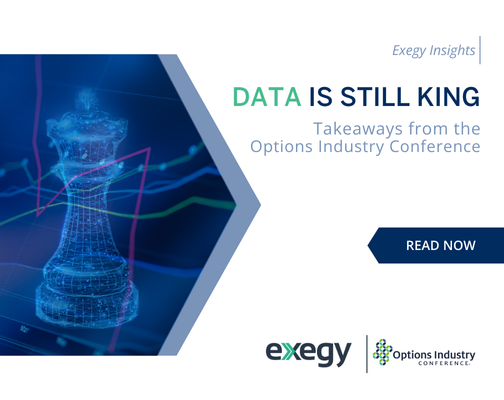Direct Market Access in Exchange-Traded FX Derivatives
In recent years, in a bid to capture liquidity away from the traditional OTC/bilateral markets, exchanges around the world have been heavily promoting a wide range of new and improved exchange-traded derivative (ETD) contracts for FX.
Whilst some of these contracts are becoming widely traded, the jury is still out on just how successful the majority of FX ETD initiatives are likely to be in the long term. The evidence from recent BIS figures shows that, despite a major upsurge in open interest and daily average turnover in 2018/19, global volumes in FX exchange-traded contracts have dropped significantly since then (see table below). However, the recent frenzy of acquisitions of spot FX ECNs by exchanges is likely to lead to more innovative and “blended” products. CME’s FX Link is a case in point.

Regardless of how these trends might play out in the future, clearly there is a level of interest amongst market participants in trading FX instruments on-exchange. This is an ever-changing landscape, and there is every likelihood that these figures could swing upwards again in the coming months and years, particularly as exchanges continue to roll out new products and features that reduce counterparty and clearing risk whilst replicating the behaviour of OTC FX Spot.
To prepare for that eventuality, how can firms ensure they provide the best possible environment for their customers to trade these products as the FX ETD market evolves?
The answer lies in Direct Market Access (DMA), where end clients are provided with connectivity to trading venues so that they can interact directly with electronic order books.
The evolution of direct market access
The growth of DMA can be traced back to 1992, when CME launched its Globex electronic trading platform and when the FIX protocol was first established to facilitate electronic trading of equities. Since then, the trend towards more automated trading across asset classes has been driven by advances in technology, regulatory changes in market structure, and the substantial benefits that DMA offers.
For sell-side firms that are able to offer DMA to their clients, it provides them with a range of additional advantages. These include greater efficiency, faster speed, more control, in-built regulatory compliance, and the avoidance of information leakage. Not only that, but DMA can also offer end clients the ability to participate in restricted trading sessions, such as opening and closing auctions for example, initiating or responding to RFQs, as well as providing the facility to trade actively or passively by submitting to the exchange order book either aggressive orders (priced across a narrow bid-offer spread) or passive orders (resting at a desired price and size).
Today, there are two main types of DMA solutions that are becoming more widely available in the FX ETD markets: screen-based and API-based.
Screen-based DMA solutions are typically click-and-trade systems. The end client clicks on a screen and an order goes straight to a venue’s order book. Although these can provide a certain level of automated trading, they are generally architected for clients who are less latency-sensitive, because the very act of pointing and clicking, which takes a second or more, means that millisecond or microsecond differences in latency are irrelevant.
API-based DMA on the other hand, does not involve any human interaction and is designed specifically for automated trading. API-based DMA solutions may also contain code written specifically to interact with an exchange’s own API, in such a way as to minimise latency and maximise performance on that venue.
High-frequency and algorithmic trading continue to take up a bigger share of the overall volume in these markets. API-based DMA solutions are becoming more and more prevalent. The combination of buy-side firms deploying quantitative methods for price discovery, principal trading groups (PTGs) conducting market-making activities, and banks and brokers wishing to provide their clients with access to these electronic markets has fueled the need for more robust and scalable technology across the board.
Whilst many firms have undertaken in-house development projects to deploy direct access to trading venues, the cost to maintain proprietary DMA platforms is becoming untenable for many firms. This has led to a new breed of service providers, offering broker-neutral solutions that are built for both speed and cross-market access. This kind of innovation and specialisation benefits both buy-side and sell-side participants as well as the exchanges themselves, by offering increasingly powerful and independent solutions with built-in pre-trade risk controls and access to multiple venues on an equal and exchange-neutral basis. This means that, rather than maintaining costly DMA platforms, brokers and banks can focus on their core business of clearing and execution services, and trading firms can focus on their core business of trading.
Managing the changes
One of the most significant challenges for any firm managing direct market access to multiple markets is ensuring that their DMA platform is kept up to date with ongoing obligatory exchange-driven changes (EDCs).
Every electronic trading venue will regularly issue notices of changes to their data feeds, gateways and electronic trading platforms, many of which require mandatory updates to connected systems.
This can become a monumental task. The image below shows that from 1 January through 30 September 2020, across a selection of 51 trading venues, Exegy received a total of 11,058 EDC notices, all of which had to be assessed to determine what production software changes were necessary.

This demonstrates the scale of the task for any firm maintaining a DMA platform. In order to simply preserve the status quo, EDCs require careful end-to-end management and dedicated resources in order to assess them and implement necessary updates. This is one of the reasons why firms are increasingly outsourcing the management of their DMA platforms to dedicated, specialist service providers that can offer DMA under an as-a-Service (aaS) model and maintain operational changes as determined by those exchanges.
The build and buy approach
Today, many firms realise that market access solutions are not “one size fits all.” But although applications that use proprietary algorithms remain as candidates for in-house development, others, such as the more commoditised trade execution gateways that are essential to market access in the FX ETD markets, can now be bought or outsourced.
This means that the old conundrum of build-vs-buy is slowly but surely shifting into build-AND-buy. Key to the success of this approach is of course the integration points between the outside technology partner and the internal applications. There is no question that some firms will continue to justify building their own proprietary trading platforms. But for most, building and maintaining such a trading platform is not part of the firm’s key value proposition.
Other technology developments have made proprietary solutions less essential. For data-intensive trading firms, bandwidth and processing power has historically been a key consideration. But as both of these resources can now be supplied on demand, firms do not need to rely on proprietary infrastructures. Even trading firms whose strategies are based upon speed no longer need to rely on in-house solutions, as API-based DMA now enables ultra-fast trading.
The net result of all this is that an increasing number of firms are investigating how they can utilise a SaaS model for the DMA component of their FX ETD trading technology, so that they can cut costs and increase margins, whilst maintaining their operational focus.
Under the SaaS model, buy-side players continue to use brokers (since they are not typically members of an exchange), but not for the technology component, as the DMA platform is broker-neutral. And brokers themselves no longer need to build and maintain their own DMA-based trading platforms, which can siphon away resources from the parts of their business that really make a difference with clients. Utilising a SaaS model enables them to mutualise costs and create business flexibility. This style of DMA trading is also often referred to as Sponsored Access.
Another benefit to consider with the SaaS model is the ability it gives firms to fail fast. Firms can rapidly onboard new FX ETD instruments, test out their strategies and if they don’t work, pull out of those markets, all at a low implementation cost. It makes it easier and more cost effective when there’s little technical work needed to move to these new markets.
Three key factors
There are three key factors that firms need to consider when selecting a SaaS provider for DMA in the FX ETD markets: performance, flexibility, and ecosystem:
Performance: For any electronic trading platform supporting DMA, performance is always a key consideration. If poor market data and trade execution speeds result in missed trades, then it won’t be long before clients look elsewhere for their DMA needs.
Flexibility: Flexibility, and the scope for customisation of the platform, is another major determinant. For example, clients might have specific requirements around how pre-trade risk is configured and calculated, so any DMA platform offered as-a-Service needs to be able to match end-clients’ business practices and workflows.
Ecosystem: A third factor to consider is the ecosystem, or the community of participants on the platform. This is particularly important for buy-side firms or PTGs that want to adopt a multi-broker approach, so the presence of multiple brokers on a platform can be a decisive factor. Similarly, platforms that have large numbers of clients are attractive to exchanges and venues because that can directly translate into new business.
Looking to the future
Whereas in the past, DMA environments might have been prohibitively expensive for firms to deploy and maintain, that is now changing with the emergence of the fully autonomous DMA SaaS model, which reduces the cost burden of running a dedicated DMA infrastructure, whilst also providing a more agile and streamlined onboarding experience for end clients, who increasingly need DMA to stay competitive. And the flexibility and scalability offered by SaaS can encourage these clients to widen their DMA footprint.
With exchanges bringing out new FX ETD contracts all the time, on-exchange FX derivative trading could rapidly go through a major growth spurt in the near future, particularly as the advantages it offers – regulated markets, firm and transparent pricing, no last-look, all-to-all anonymous trading and the capital efficiencies of clearing through a central counterparty – are clear for all to see.
If and when this pick up in ETD trading happens, firms on both the buy side and the sell side need to be ready to capitalise on that growth and not be hindered by sub-par DMA infrastructure.
To learn more about how DMA is evolving in today’s financial markets, download Exegy’s in-depth white paper, “Direct Market Access in the Modern Financial Era: A New Level of Control.”



